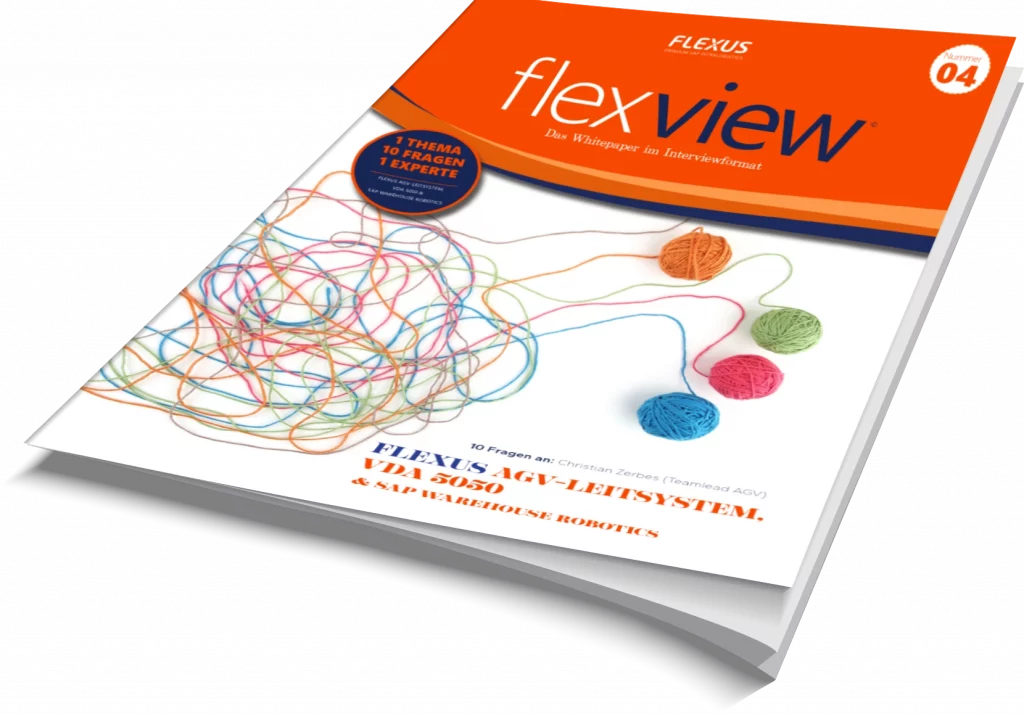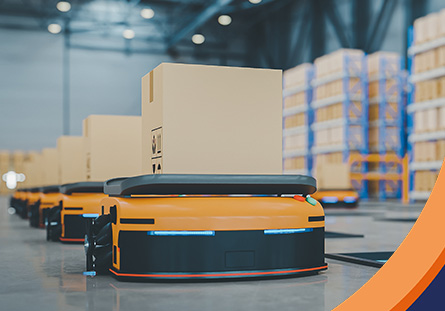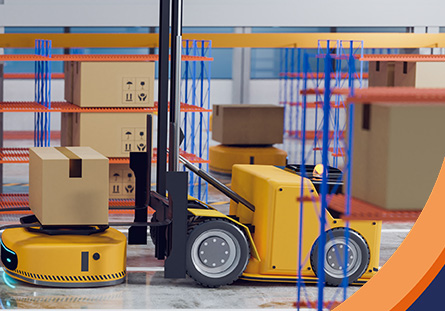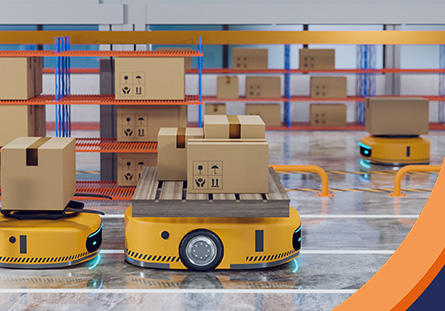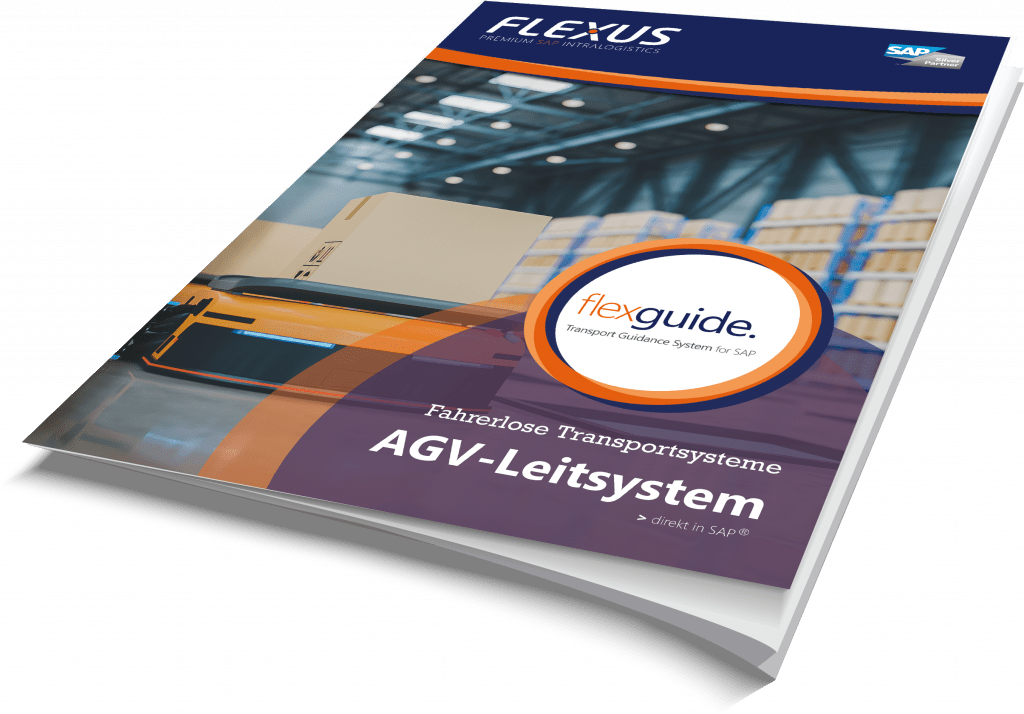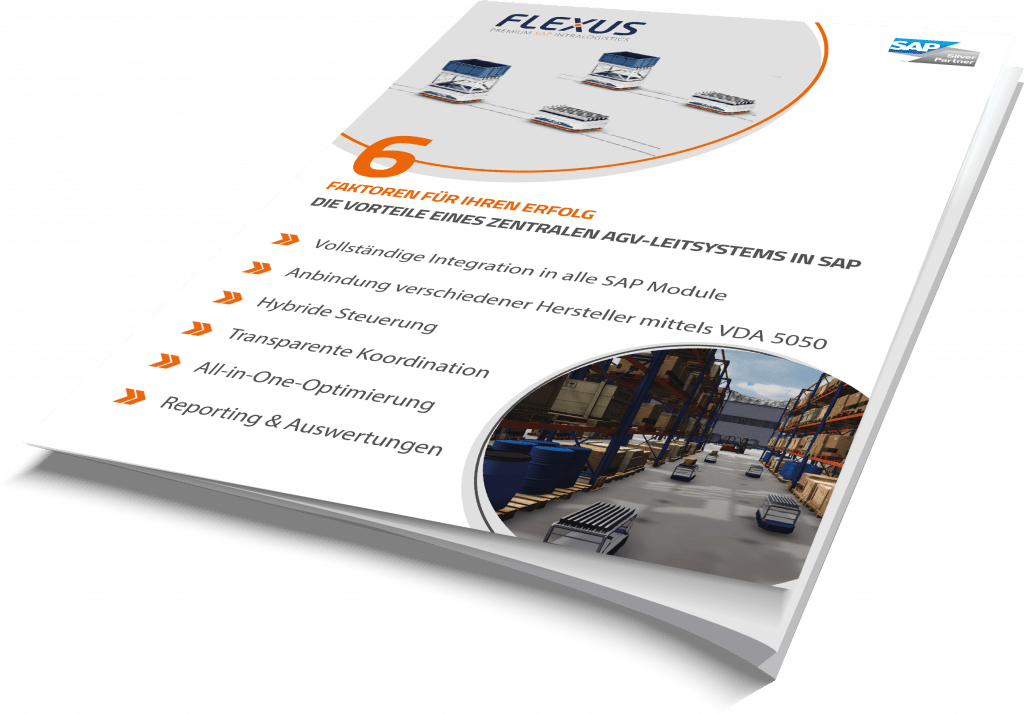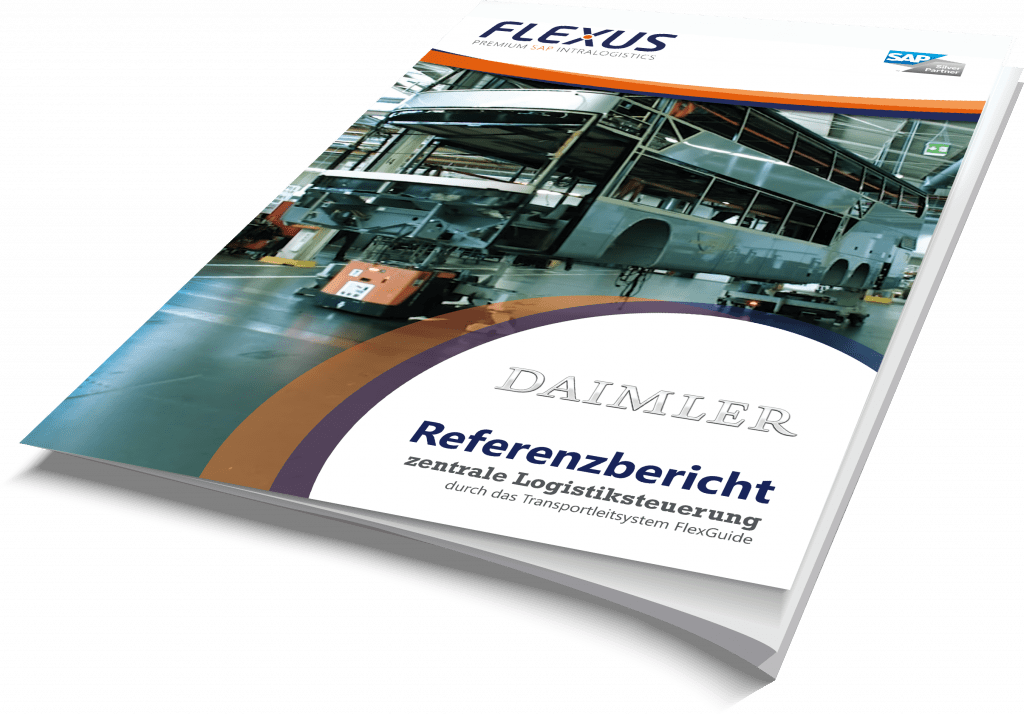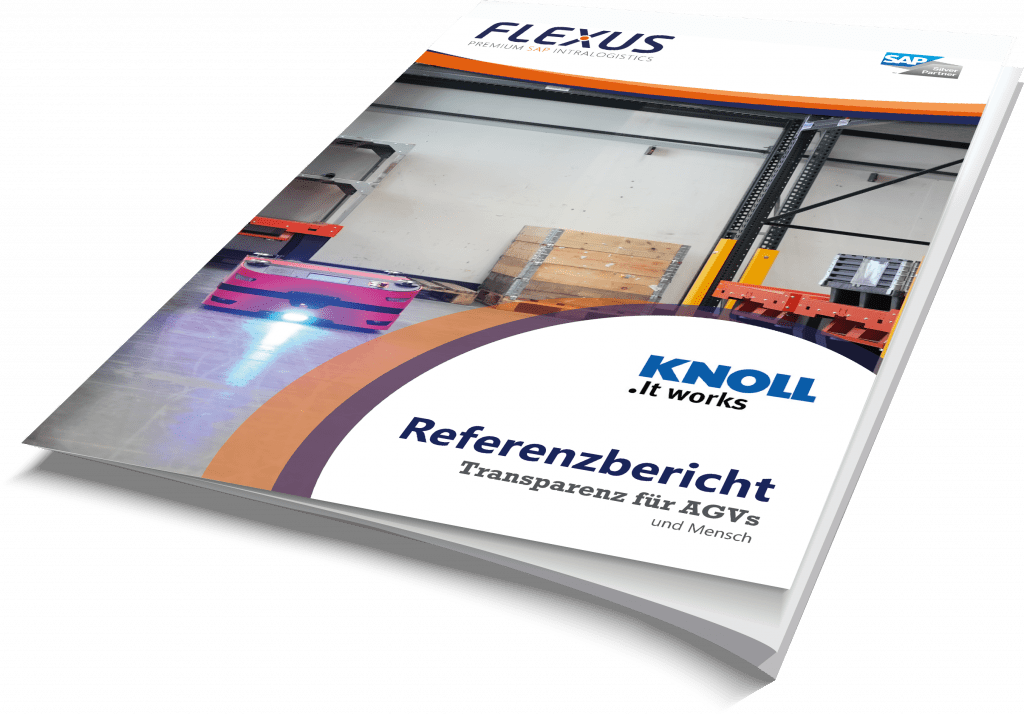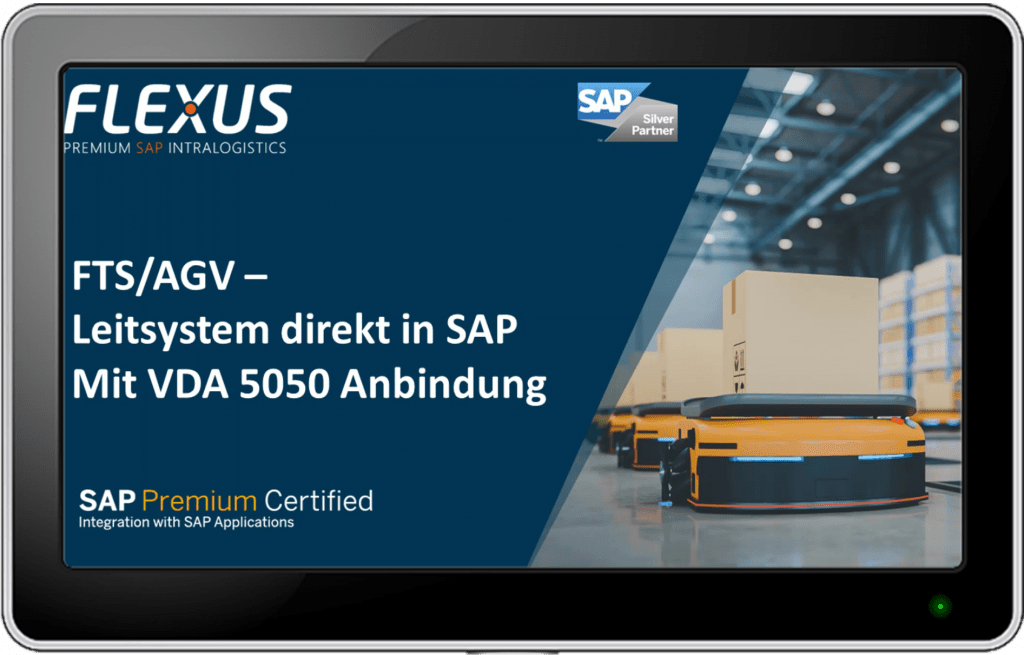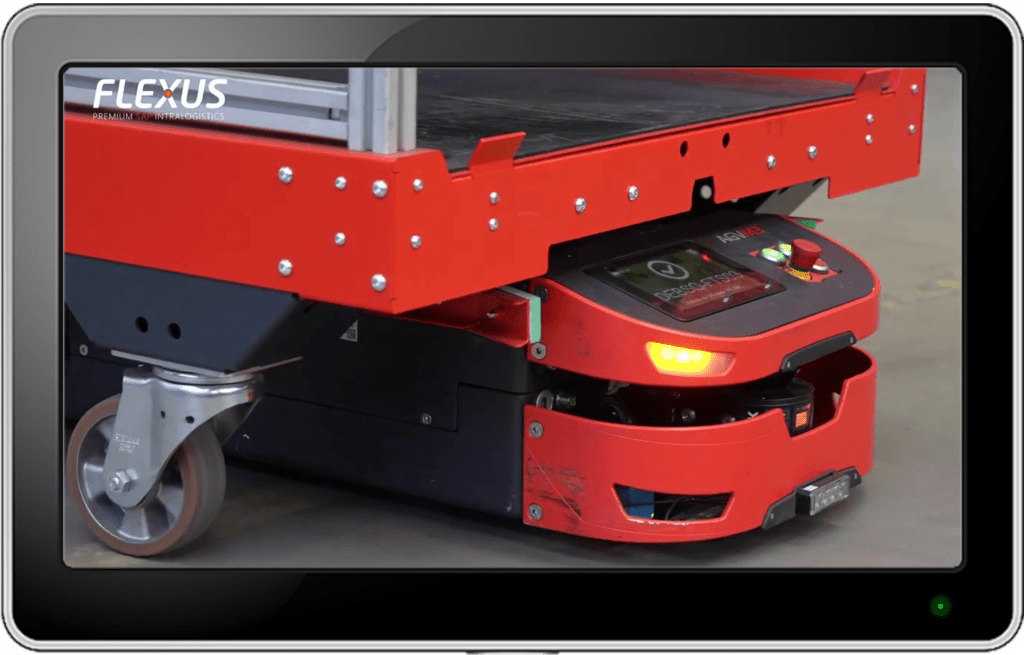VDA 5050:
Der AGV-Standard für SAP
Standardisierte, herstellerübergreifende Kommunikation und Optimierung


Management und Optimierung aller AGVs
Falls Sie darüber nachdenken, mehrere AGVs (Automated Guided Vehicle) in Ihrem Lager oder der Produktion einzusetzen oder dies bereits tun, ist die VDA 5050 für Sie genau richtig. Die VDA 5050 ist ein Standard zur Kommunikation verschiedenster AGV-Typen aller Hersteller. So können alle Fahrzeuge einheitlich über die gleiche Schnittstelle an ein Leitsystem angebunden werden. Auch für das AGV-Modul des FlexGuide ist dies die empfohlene Schnittstelle für neue Projekte.
Auf den ersten Blick erscheint die VDA 5050 wie ein technisches Detail, um welches sich hauptsächlich die Hersteller von AGVs und Transportleitsystemen & Staplerleitsystemen kümmern sollten. Es gibt jedoch eine Reihe an Gründen, warum auch Sie sich über dieses Thema informieren sollten, wenn Sie planen, AGVs in Ihrer Produktion oder Ihrem Lager einzusetzen:
- Sie können bei der Konzeption direkt auf die VDA 5050 setzen
- Sie können beurteilen, ob sich die Umstellung auf eine VDA 5050 Schnittstelle lohnt
- Sie können benötigte Aufwände abschätzen
- Sie können die benötigte technische Infrastruktur im Voraus überprüfen
- Sie können im Projekt mitreden und beurteilen, was Ihnen Flexus Berater oder AGV-Hersteller erzählen
In unserem Glossarartikel haben wir die wichtigsten Details beschrieben, um Ihnen zu erläutern, welche Inhalte die VDA 5050 abdeckt und welche Fragestellungen bei konkreten Projekten auf Sie zukommen werden. In diesem Artikel finden Sie die wichtigsten Konzepte erklärt, um einen Überblick zu bekommen, was die VDA 5050 für Sie bedeutet und was wir Ihnen bieten können.
Welche Vorteile bietet Ihnen die VDA 5050?
Das Ziel der VDA 5050 ist eine vereinfachte, schnellere Integration von AGVs in ein Leitsystem. Derzeit gibt es viele verschiedene proprietäre Schnittstellen, wodurch in jedem Projekt erneut hoher Aufwand entsteht, um einen AGV-Typen an ein Leitsystem anzubinden. Hinzu kommt, dass hierdurch Funktionen im Leitsystem selten wiederverwendet werden und im schlimmsten Falls AGVs nicht herstellerübergreifend gesteuert und optimiert werden können. Folgende Vorteile bieten sich Ihnen:
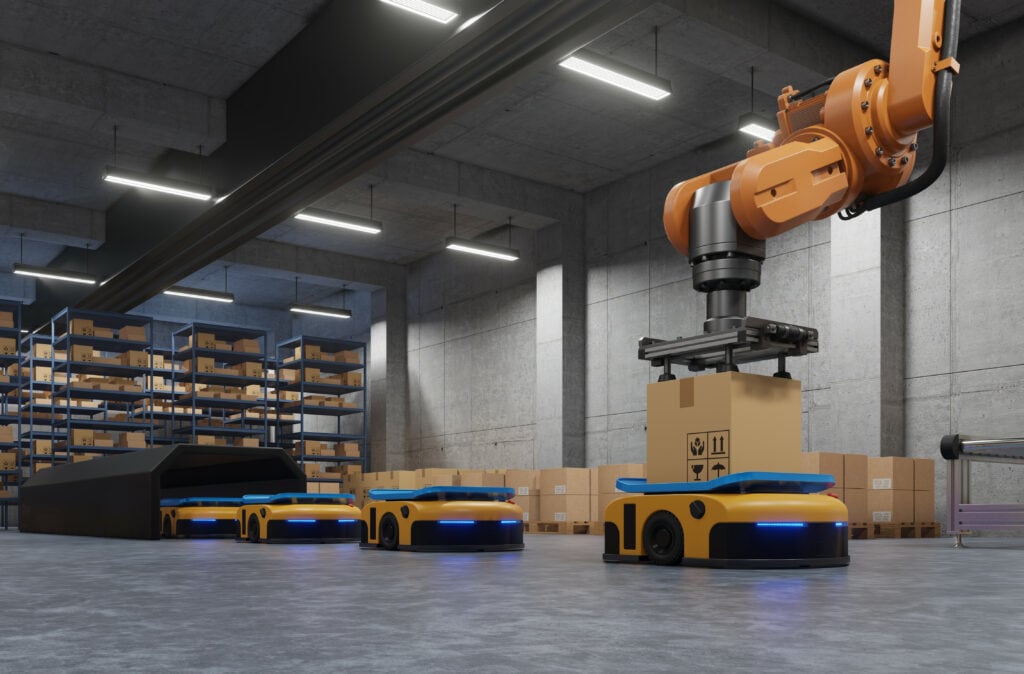
Schnellere Projekte
Falls der AGV-Hersteller auch die VDA 5050 unterstützt, ist die technische Implementierung auf beiden Seiten bereits zu 95% erfolgt. Lediglich individuelle Sonderfälle müssen zusätzlich entwickelt werden.
So können sowohl Proof-Of-Concepts, kleine Projekte mit einem AGV-Typen, bis hin zu großen Projekten mit hunderten AGVs von unterschiedlichen Herstellern schneller umgesetzt werden.
Integration zusätzlicher Hardware und Systeme
Ein zentraler Bestandteil der VDA 5050 ist die Entkopplung zwischen Hardware und Software über standardisierte Schnittstellen. Somit können Sie mit geringem Aufwand in späteren Projektphasen zusätzliche AGVs mit einbinden.
Auch weitere Systeme, zum Beispiel zur Echtzeitvisualisierung oder Traffic-Überwachung, lassen sich ohne Änderungen am bestehenden System integrieren.
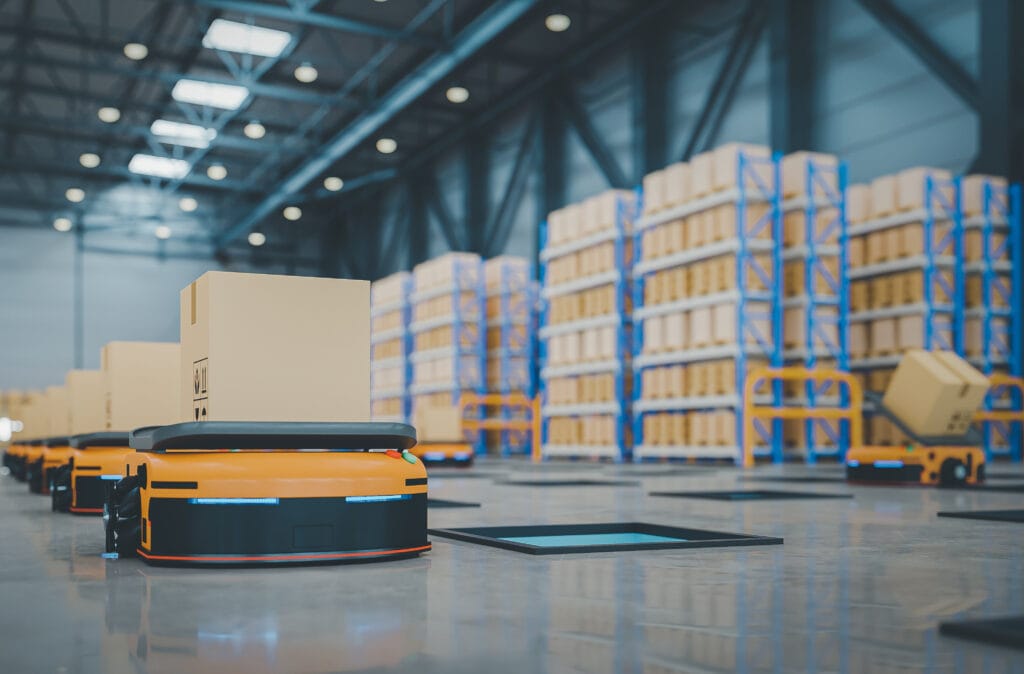
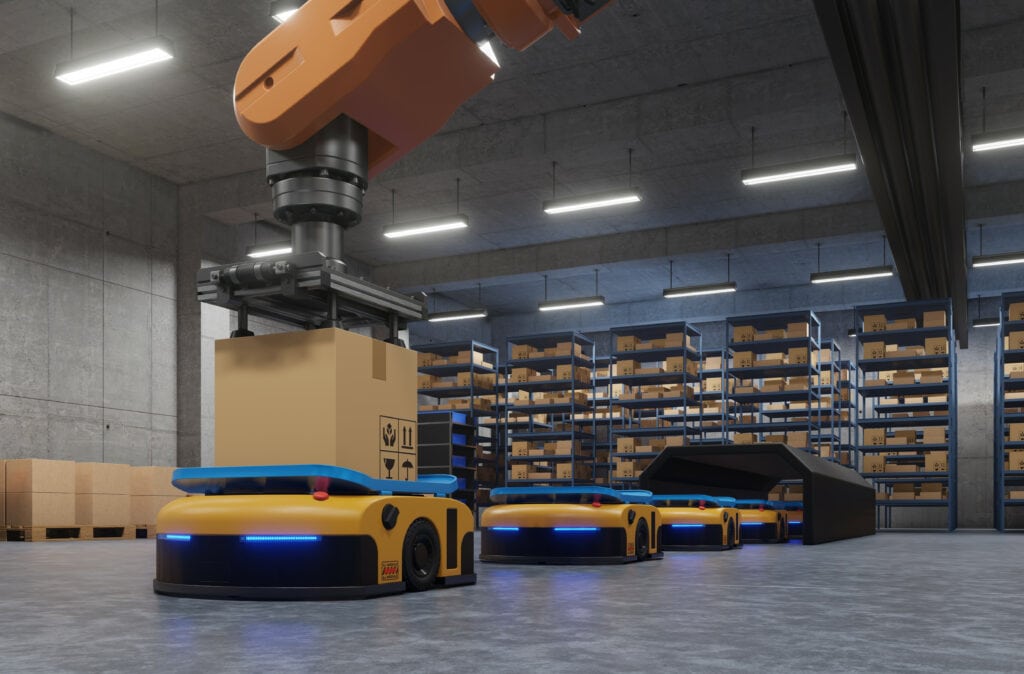
Standardisierte Funktionalitäten
Neben standardisierten Bezeichnungen und Prozessen besteht ein großer Vorteil für Sie darin, dass konkrete Funktionalitäten definiert sind.
Dies bietet eine gute Basis zu Projektbeginn für Diskussionen und schafft Klarheit für alle Beteiligten, was Mindestanforderungen sind und welche optionalen Zusätze möglich sind.
Das perfekte Match
Sie haben Fragen zur VDA 5050 und unserem AGV-Leitsystem? Unsere Experten beraten Sie gerne!
Integration der VDA 5050 in SAP
Flexus ist der Spezialist für die Integration von AGVs in eine SAP Landschaft. Unser Kerngeschäft seit über 25 Jahren besteht darin, zu verstehen, zu optimieren und zu erklären, wie Waren in der Intralogistik mit SAP von A nach B transportiert werden können.
In vielen Fällen ist die Realität komplexer als ursprünglich angenommen, da intralogistische Prozesse oftmals komplex und individuell ausgeprägt sind. Die folgenden Herausforderungen sind in den meisten unserer Projekten nur der Anfang:
- Blockläger
- Automatische Hochregale
- Mehrstufige Transporte
- Vorkommissionierungen
- Abhängigkeiten zu Transporten aus dem Yard Management
- Routenzüge mit Tourplanungen
Fertige Integration in SAP EWM, SAP WM und SAP S/4 HANA

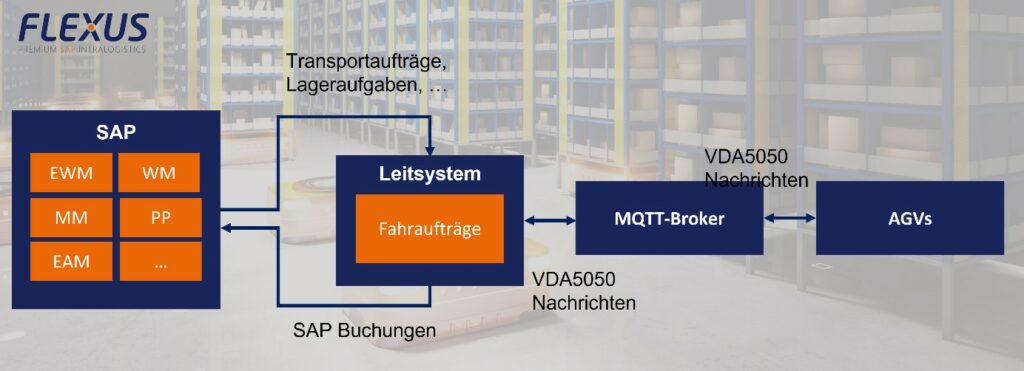
All diesen komplexen SAP spezifischen Herausforderungen sind wir in unseren Projekten bereits begegnet und konnten sie mit unseren Kunden und Partnern gemeinsam lösen. Auf diese Erfahrungen und fertigen Entwicklungen baut auch die VDA 5050 Schnittstelle von Flexus auf.
Wir bieten ihnen fertige und bereits produktiv eingesetzte Schnittstellen und Logiken, um sämtliche SAP Prozesse optimal an Ihre AGVs anzupassen. In unserem Artikel zur AGV-Standardschnittstelle für Ihr SAP EWM und SAP WM erhalten Sie mehr Informationen, wie Sie mit Flexus sowohl SAP MM, SAP EWM, SAP WM als auch non-SAP Transporte kombinieren, optimieren und per VDA 5050 an AGVs verteilen können.
Technische Integration in SAP Systemlandschaft
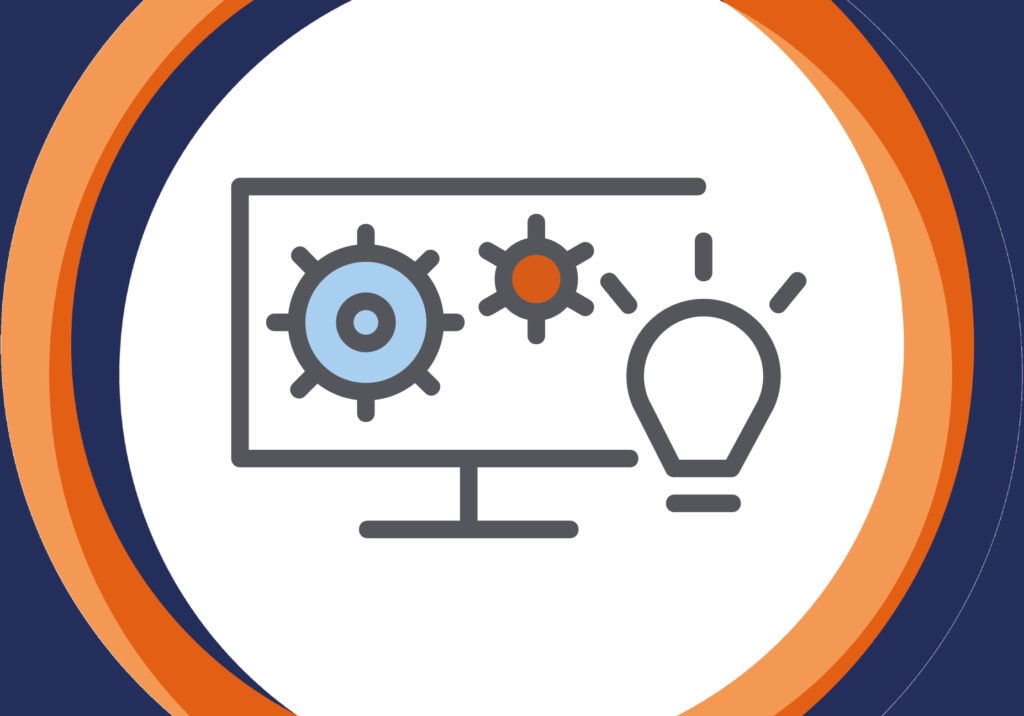
Nicht nur die prozessuale und funktionale Integration in SAP spielt eine Rolle, sondern auch die Technik. Oft wird dieser Aspekt vor Projektstart vernachlässigt und sorgt anschließend für erhebliche Mehraufwände.
Flexus bietet Ihnen eine Lösung, die zu 100% in Ihrem SAP System lauffähig ist. Dadurch haben sie nicht nur die vollständige Kontrolle über Ihre Daten, sondern auch die Garantie, unsere Lösung so lange auf die Art zu nutzen, wie Sie es für richtig halten.
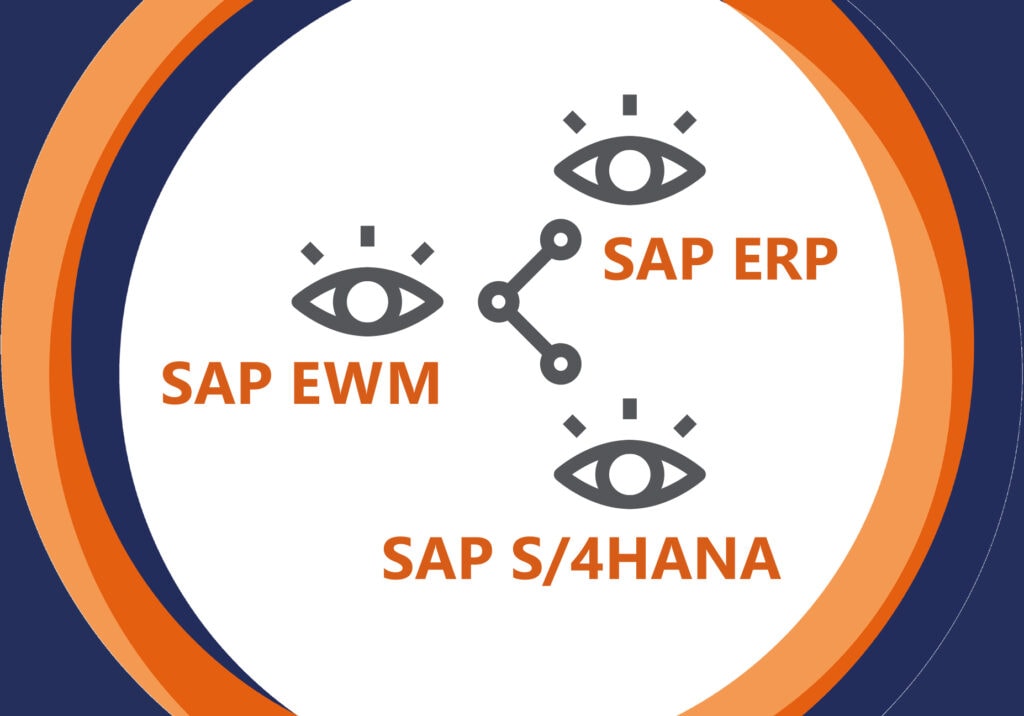
Daten und Kernprozesse im SAP ERP, SAP EWM oder SAP S/4 HANA
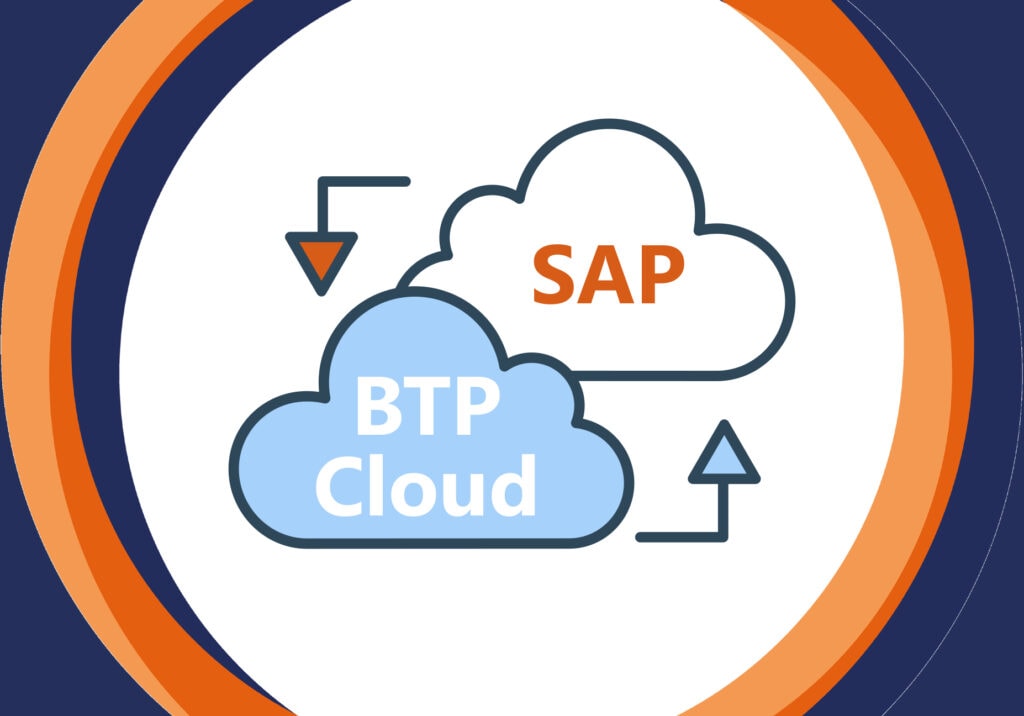
VDA 5050 Broker und Schnittstelle in der SAP Cloud, Business Technology Platform oder SAP S/4 HANA
FlexView: AGV-Leitsystem, VDA 5050 & SAP Warehouse Robotics
Flexus AGV-Hub im Einsatz
Erfahren Sie von unserem AGV Teamlead Christian Zerbes in unserem Whitepaper im Interviewformat, wie Sie Ihre Intralogistik mit AGVs effizienter gestalten. Ein großer Vorteil des AGV-Hubs ist, dass es herstellerunabhängig arbeitet und über VDA5050 unterschiedliche Hersteller ohne großen Aufwand angebunden werden können.
Wir beraten Sie gerne!
Unsere Experten informieren Sie umfänglich über unsere Lösungen und beraten Sie gerne, welche Möglichkeiten sich in Ihrem Unternehmen bieten!

